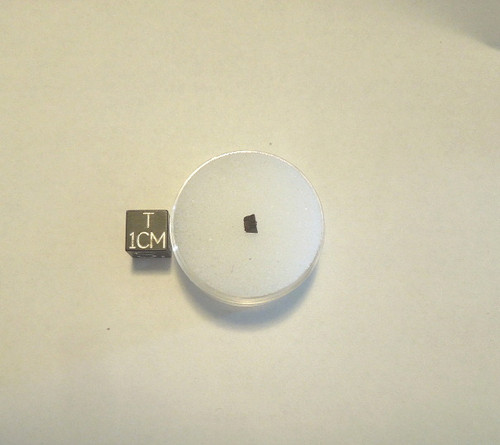The historic Cape York iron was known since antiquity to local natives, but was brought to the attention of the world by explorers who eventually some dispersed some of the largest masses to major museums around the world. It was the subject of massive attention and scrutiny at the time and it remains one of the world's largest iron meteorites. Specimens of this meteorite are rarely seen in private collections and most of it is held by various institutions and museums. I acquired a very small supply of oxidized shale fragments which I am offering here.
The specimen being offered here is a small fragment with some unoxidized metal remaining. It weighs approx. .065g (65mg).
DISCOVERY OF CAPE YORK (AGPALILIK) IRON METEORITE, NORTHWEST GREENLAND
Name: CAPE YORK (AGPALILIK).
The place of fall or discovery: Agpalilik Peninsula, 125, km Southeast of Thule and 15, km North of the Savigsivik settlement, Melville Bay, Northwest Greenland.
Date of fall or discovery: FOUND, in the summer of 1963.
Class and type: IRON, medium octahedrite.
Number of individual specimens: 1.
Total weight: Estimated 15 tons. Still not fully excavated. Dimensions: about 210 X 200 X 125 cm.
Circumstances of the fall or discovery: The meteorite was discovered by Dr. Vagn Buchwald (Copenhagen, Denmark), during a study of the locality where the Greenland meteorites were previously discovered. It was 6 km to the west of the point where the two known specimens «Woman» and «Dog» were found and is undoubtedly a part of the Cape York meteorite shower. The meteorite lay on an ice-free slope 500 m from the shore and was partly covered with gneiss boulders. There was no crater and no crushing of rocks discovered. The meteorite has temporarily been left where discovered. The specimen found is the sixth from the Cape York meteorite shower. Dr. Vagn Buchwald has drawn up a summary of precise data on all the known specimens as of September 1963.





